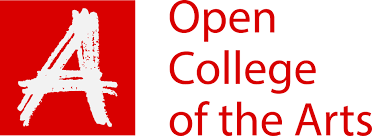As part of my research for the Assignment 4 essay I came across reference to the exhibitions at MoMA (Museum of Modern Art) in New York [1]. Through the 20th century and into the 21st century it appears to have an influential place for identifying photographic talent. I also feel it captures what captures an accurate slice of the important trends of the photography world.
Here I am going to look at key exhibitions plus praise and criticisms through various curator tenures.
MoMA has been important in developing and collecting modernist art, and is often identified as one of the largest and most influential museums of modern art in the world [2].
‘MoMA developed a world-renowned art photography collection first under Edward Steichen and then under Steichen’s hand-picked successor John Szarkowski. The department was founded by Beaumont Newhall in 1940. Under Szarkowski, it focused on a more traditionally modernist approach to the medium, one that emphasized documentary images and orthodox darkroom techniques.’ [3]
Edward Steichen’s role as Director of Photography from 1947 to 1961 saw him curate the exhibit ‘The Family of Man’ which was seen by almost 10 million people. He was followed by his hand picked successor John Szarkowski who had the role from 1962 to 1991. The Photographer’s Eye exhibition (1964) that accompanied his book was a sign of his autocratic style for the next 30 years. This was his opportunity to define the characteristics of a photograph and if it wasn’t as defined then it was deficient in some way. He had a significant role to play in the acceptance of colour photography when he curated ‘The Photographs of William Eggleston’ in 1976.
His tenure was followed by Peter Galassi and then Quentin Bajac. It was Bajac’s book ‘Photography at MoMA: 1960 – Now’ [6] that was reviewed by two art authors, Mark Steinmetz [4] and Charlotte Cotton [5]. Steinmetz used it as an opportunity to highlight Bajac’s vagueness around his opinion of the direction of his predecessors. Charlotte Cotton’s review [6] is more positive but still references Szarkowski in terms of questioning where the current department stands in the history of photography at MoMA.
Interestingly the modernist and post-modernist standpoints come through from both of these reviewers. Steinmetz’s position is very much a modernist one where he summarises that the book puts ‘so much emphasis on photo-based art rather than on clear photographs that describe the photographer’s reactions to the world‘[4]. Cotton, who authored the book ‘The Photograph As Contemporary Art’, is in the post-modernist camp and appreciates the collection put together in the book and implies that she wishes the current photography department showed their colours in terms of the direction they wish to take.
Photographs by William Eggleston – 1976. This was the first solo exhibit of colour photography in MoMA’s history. This was a significant exhibition curated by John Szarkowsky who wanted the focus to be on ‘home and place’ as opposed to ‘colour’, which was what Eggleston had said was the subject of his work.
More Than One Photography – 1992. Abellardo Morell’s Light Bulb was used as the cover image. The brochure contained 9 black and white images which suggests colour was still not accepted fully (or a constraint on the brochure printing process). Significantly this exhibition was one of the early Peter Galassi exhibitions and probably used as a vehicle to re-energise the photography department at the start of his tenure.
References:
- MoMA Website
- Kleiner, Fred S.; Christin J. Mamiya (2005). “The Development of Modernist Art: The Early 20th Century”. Gardner’s Art through the Ages: The Western Perspective
- MoMA Wikipedia page
- Mark Steinmetz review of Photography at MoMA: 1960 – Now , Time.com, 2015
- Charlotte Cotton review of Photography at MoMA: 1960 – Now , Time.com, 2015
- Bajac. Q, Photography at MoMA: 1960 – Now, MoMA, 2015
